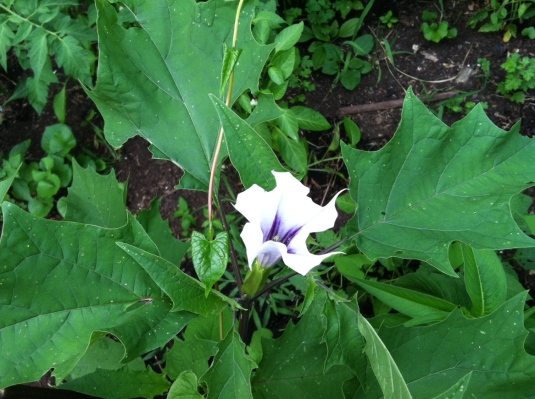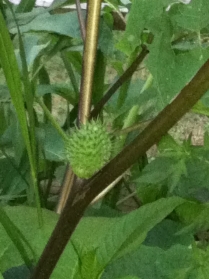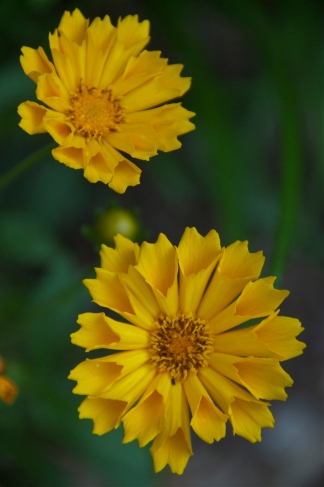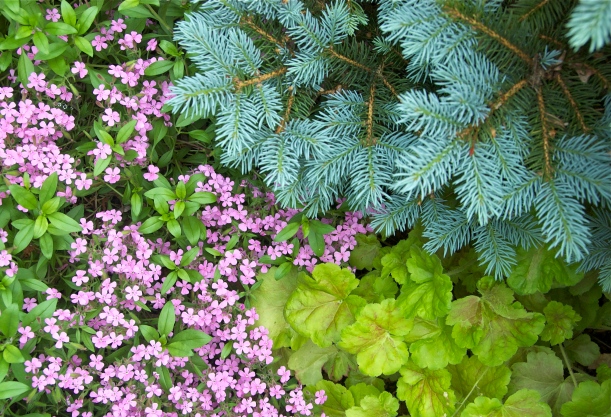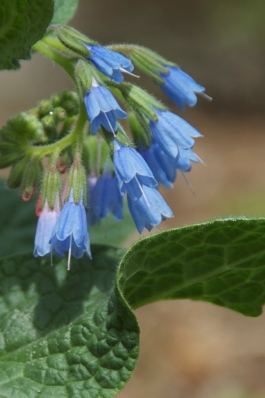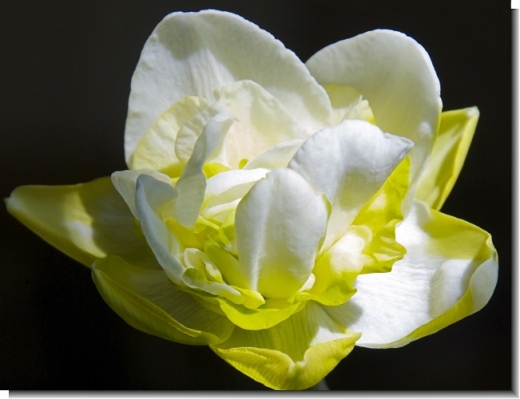My friend Cathy recently sent me this picture and asked for a plant i.d. Since I didn’t know I posted it to the Redding Garden Club Facebook page. Turns out this plant caused quite a commotion.
This is Datura stramonium and every part of it is poisonous — the leaves, flowers, stems, roots, even the seeds.
“Wash your hands well,” warned a garden club member. “Seed pods are prickly,” instructed another. Several urgent links to Wiki followed. So I started to educate myself on Datura and here’s what I found:
Datura is a genus of nine species of flowering plants belonging to the family Solanaceae (also known as Nightshade).
The name Datura comes from the Hindi dhatūrā, meaning thorn-apple. You’ll hear them called Angel’s Trumpets, a name Datura shares with the closely related genus Brugmansia (whose flowers are pendulous). Datura can also be called Jimsonweed.
Datura is a herbaceous annual or short-lived perennial, found in all warm and tropical regions of the globe, possibly originating in Central America. The leaves are lobed or toothy and the flowers are moderately fragrant, especially at night.
Datura stramonium inhabits waste places and roadsides in dry soil, growing 1-5 feet tall. It flowers June through August.
Datura is deadly. Most parts of the plant contains dangerous levels of toxic hallucinogen, which can cause delirious states and death. It has a high incidence of fatal overdoses among uninformed users. Can be fatal to pets, people and livestock.
History:
- Aphrodisiac. A well-known ingredient of love potions and witches’ brews. In India seeds are still ingested as an aphrodisiac. (Then again, there’s that “could be dead” thing…)
- Sacred roles. From the Caribbean to Africa Datura have been used to induce visionary trances, see the future and reveal the causes of misfortune and disease. In Zuni tradition the rain-priests use the root of Datura inoxia when they appeal to their ancestor-spirits for rain.
- Medicinal uses: Painkillers, narcotics and asthma control.
Despite the warnings I couldn’t find any restrictions on growing Datura. Its beautiful flowers often make it a popular container plant.
Although I believe Cathy is getting rid of this one. She thinks it’s a bit too scary to be on her property.
For More Info about Datura:
Connecticut Botanical Society
Wikipedia
B and T World Seeds (excellent history)
 Sharon Epstein is a passionate gardener and past president of the Redding Garden Club in Redding, Connecticut. When she’s not in the garden she’s teaching students how to write great college application essays and master interview skills through her business First Impressions College Consulting. She blogs on college admissions at ApplyingToCollege.org.
Sharon Epstein is a passionate gardener and past president of the Redding Garden Club in Redding, Connecticut. When she’s not in the garden she’s teaching students how to write great college application essays and master interview skills through her business First Impressions College Consulting. She blogs on college admissions at ApplyingToCollege.org.

